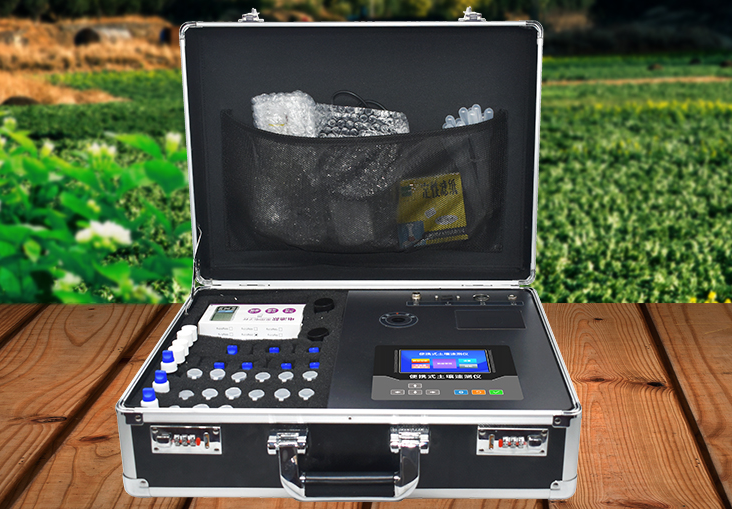Soil sensor technology has emerged as a game-changer in precision agriculture and crop management. By providing real-time data on soil conditions, these sensors enable farmers to make informed decisions regarding irrigation, fertilization, and pest control, ultimately leading to improved crop yields, resource efficiency, and sustainability. This article explores the role of soil sensor technology in revolutionizing agriculture, including its applications, benefits, and future prospects.

Introduction:
Agriculture, being the backbone of our society, faces numerous challenges such as water scarcity, unpredictable weather patterns, and the need to feed a growing global population. Precision agriculture, a technology-driven approach, aims to optimize crop production while minimizing resources and environmental impact. Soil sensor technology plays a pivotal role in achieving this goal by providing critical information about soil moisture, temperature, nutrient levels, and other parameters essential for effective crop management.
Importance of Soil Monitoring:
Soil is a complex living ecosystem that directly influences plant growth, nutrient availability, and water retention. Traditional farming practices often rely on generalized assumptions about soil conditions, leading to inefficient use of resources and suboptimal crop yields. Monitoring soil conditions in real-time allows farmers to implement precise interventions tailored to specific field requirements, ensuring optimum plant growth, and minimizing waste.
Soil Sensor Technology:
Soil sensors are devices that measure various soil parameters, providing valuable data for decision-making in agriculture. These sensors can be installed at different depths in the soil, allowing for spatial monitoring and customization depending on crop types and growth stages. The data collected by soil sensors can be transmitted wirelessly to a central system or accessed remotely, enabling farmers to monitor and manage multiple fields efficiently.
Applications of Soil Sensor Technology:
a) Soil Moisture Monitoring: Soil sensors measure the water content in the soil, allowing farmers to optimize irrigation schedules and prevent over or under-watering. This information helps reduce water consumption, minimize leaching of nutrients, and improve overall water use efficiency.
b) Soil Nutrient Monitoring: Soil sensors can measure the levels of essential nutrients such as nitrogen, phosphorus, and potassium in the soil. This information enables farmers to precisely apply fertilizers, reducing costs and minimizing environmental pollution caused by excess nutrient runoff.
c) Soil Temperature Monitoring: Soil temperature affects seed germination, root development, and plant growth. By monitoring soil temperature, farmers can determine optimal planting times, manage crop emergence, and implement strategies to mitigate extreme temperatures.
d) Soil pH Monitoring: Soil pH plays a crucial role in nutrient availability and microbial activity. Soil sensors allow farmers to monitor pH levels and adjust soil amendments accordingly, ensuring the optimal pH range for specific crops.
e) Soil Compaction Monitoring: Soil compaction can hinder root growth and nutrient uptake. Soil sensors can detect compaction levels, enabling farmers to take corrective actions such as deep tillage or controlled traffic farming to improve soil structure.
Benefits of Soil Sensor Technology:
a) Enhanced Crop Yield: By providing real-time data on soil conditions, soil sensors enable farmers to optimize irrigation, fertilization, and other management practices. This leads to healthier plants, improved nutrient uptake, and ultimately higher crop yields.
b) Resource Efficiency: Soil sensor technology promotes resource-efficient farming practices by enabling precise water and fertilizer management. It minimizes water wastage, reduces fertilizer application rates, and prevents nutrient leaching, thus conserving resources and reducing environmental impact.
c) Cost Savings: Precision agriculture driven by soil sensor technology allows farmers to optimize input usage, reducing costs associated with water, fertilizers, and pesticides. Additionally, early detection of soil-related issues helps prevent crop losses and mitigate potential risks, resulting in financial savings.

d) Environmental Sustainability: By optimizing resource usage and minimizing chemical inputs, soil sensor technology contributes to sustainable agricultural practices. It reduces the negative environmental impact associated with excessive water usage, nutrient runoff, and pesticide use.
e) Data-Driven Decision Making: Soil sensor technology provides farmers with valuable data that can be used for decision-making. By analyzing historical trends and real-time data, farmers can gain insights into field variability, crop performance, and long-term soil health, enabling better planning and decision making.
Future Prospects:
Soil sensor technology is rapidly advancing, with ongoing research focusing on miniaturization, improved sensor accuracy, and integration with other agricultural technologies. The future holds great potential for wireless networks of soil sensors, enabling comprehensive field monitoring and automated data analysis. The integration of soil sensor data with artificial intelligence and machine learning algorithms may also enable predictive modeling, allowing farmers to proactively address soil-related challenges and optimize crop management practices.
Conclusion:
Soil sensor technology has revolutionized precision agriculture and crop management by providing real-time data on soil conditions. These sensors enable farmers to optimize irrigation, fertilization, and pest control practices, resulting in enhanced crop yields, resource efficiency, and environmental sustainability. With continued advancements in sensor technology and data analytics, the future of soil sensor technology looks promising, promising more resilient and efficient agricultural systems for a sustainable future.
